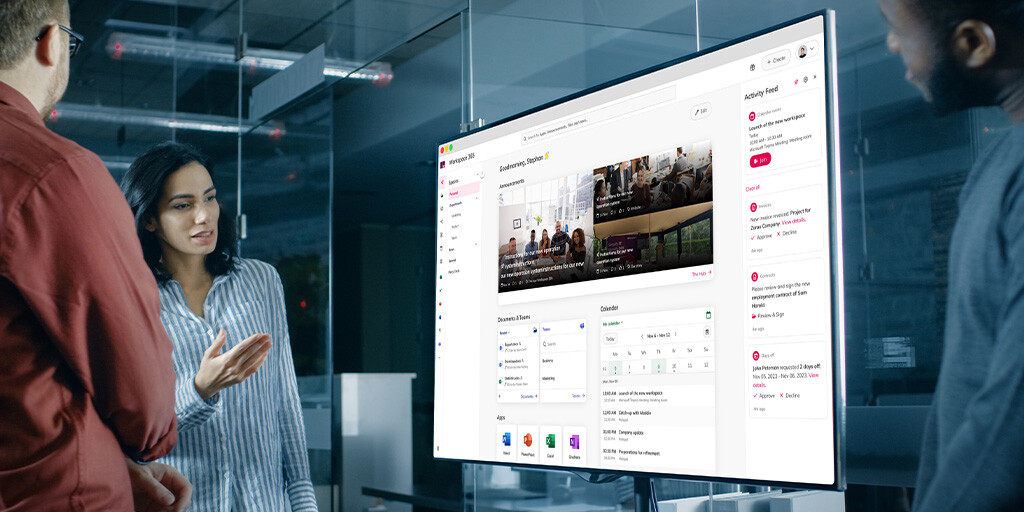Digital workplace security is absolutely critical and a priority for every CIO. A secure digital workplace helps keeps your employee, customer and corporate data safe and allows your organisation to comply with any standards and regulations that it is required to meet. In this article we explore why digital workplace security is so important, and the kind of tactics you can follow to minimise security threats.
Why a secure digital workplace is important
There are various reasons why digital workplace security is extremely important.
1. Preventing data breaches and other cyber attacks
Data breaches are significant. If criminals get hold of customer and employee data, it represents a huge regulatory and reputational risk, with further chances of security issues. There have been some very high-profile examples of personal and sensitive data being stolen that have impacted the reputation of well-known brands. Organisations who experience data breaches are also open to further legal action or fines from authorities. Ransomware and other cyberattacks can also be equally high profile and can even cripple operations for weeks. Digital workplace security needs to be stringent to reduce these risks.
2. Complying to standards and policies
IT functions and digital workplace teams will have policies and standards that they need to follow to meet various industry and government regulations, as well as quality standards. Many of these will help protect the data privacy of employees and customers (including the regulations around GDPR); some are sector- and country-specific. Professional Indemnity (PI) insurance can also dictate the need to meet specific security standards.
Policies and standards can cover a wide variety of different elements including password management, access control, processes around managing data and more.
3. Providing security for end users
A secure digital workplace also protects end users and their data. A company may hold highly sensitive information about employees, such as bank details and medical history. There can also be a blurring between the digital workplace and the IT we use in our non-working lives: people access work systems on their personal computers and device or use work computers for consumer transactions. A digital workplace with poor security can expose users to other risks.
There is also an issue of confidence that can impact adoption. A user will not want to use a non-secure digital workplace and feel they could cause a potential security issue.
How do you minimise the risks around digital workplace security?
With digital workplace security so important, teams need to act to minimise any potential risks. Thankfully, there are several tactics that teams can follow.
1. Ensure you have the right access control
A robust approach to digital workplace security has to ensure the right people have the right permissions to different applications and files. This minimises the risks of people being either able to see things they shouldn’t see or to add other users to applications that should not have access; here stringent admin controls can be important. We recently wrote a detailed article about how managing permissions and access control can minimise security threats. Here, a delegation of authority matrix can also help you to define the detail required.
2. Get the right policies in place around authentication and identity management
It’s important to have robust policies around identity management and authentication; the good news is that most products now support far greater security options. Common policies include two-factor authentication, enforcing formats for passwords and using Active Directory to manage access to applications, ensuring people who leave your company no longer access your digital workplace.
3. Get the right digital employee experience
A key cause of poor digital workplace security is shadow IT – the use of unauthorised applications for work purposes that don’t meet IT security policies. Here the best tactic is to provide the right tools and digital employee experience to meet employees’ needs, therefore reducing the need for employees to turn to alternative applications to get things done.
4. Ensure awareness for employees
Ultimately robust cybersecurity relies on the actions of your employees; here cybersecurity awareness programs can make a significant difference. Employees who are fully aware of the risks of using unauthorised shadow IT or who can spot a phishing scam are less likely to unwittingly cause a data breach. Having a clear information management policy can also help; employees need to understand which items are confidential and where in the digital workplace they should reside in.
Working securely with Workspace 365
Workspace 365 provides a number of capabilities that allow you to deliver a secure digital workplace and implement security-related policies. These include setting granular access to a particular app when experienced through Workspace 365, and even using the Conditional Access feature to set very detailed policies based on different criteria. In Workspace 365 there are also robust controls about who can control various aspects of each workspace.
You can also ensure Workspace 365 is fully synchronised with Active Azure Directory so that the procedures you have around starters and leavers, and security attached to different groups, also apply to Workspace 365.
Security is at the heart of Workspace 365. If you’d like to experience the platform and its security options, then why not request a demo?







